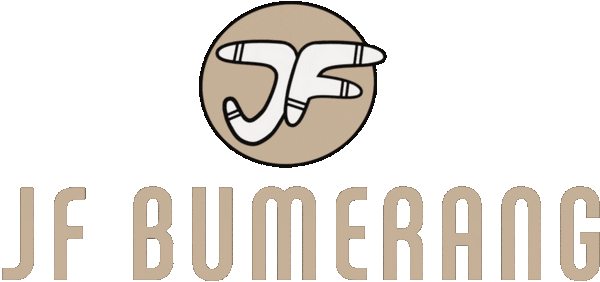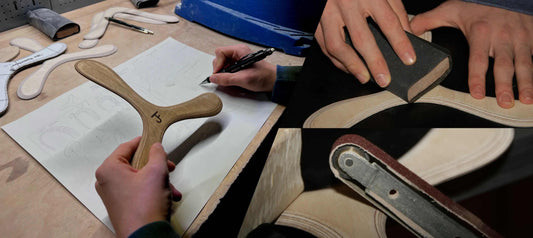
Our boomerang shapes from the world champion
Share
Opening a boomerang shop involves numerous considerations and aspects, especially for a small family business venturing into the world of boomerang making professionally for the first time. In such cases, seeking experienced support is particularly helpful.
Our boomerang shapes from the former world champion
A crucial factor in boomerang production is choosing the right shape. Various shapes are used, each with its own unique flight characteristics. These shapes influence not only the trajectory but also the aesthetics and style of the boomerang.
Our boomerang shapes are mostly from Heinz-Willi Dammers, an absolute expert in this field. Heinz-Willi Dammers, a former world champion and president of the German Boomerang Club, possesses extensive expertise in designing various boomerang shapes. His blueprints and tips are an invaluable contribution to our small family workshop. With over 100 tournaments under his belt and more than 1,000 boomerangs crafted by him, he brings not only experience but also passion and creativity to the world of boomerang design.
We sincerely thank Heinz-Willi Dammers for his great support!
Details on the different boomerang shapes
Boomerangs, fascinating flying objects with a centuries-old history, are not only artistic curiosities but also technical masterpieces. The choice of shape plays a crucial role in their flight characteristics, and in this article we will explore the advantages of the classic two-winged, three-winged, and four-winged boomerangs.
Classic twin-winged aircraft: elegance and precision
The two-winged shape is timeless and represents the essence of the boomerang. It has two narrow wings arranged at different angles in a V or semicircle. This popular shape is very elegant and is also used in the classic Australian boomerang.
Three-winged aircraft: Stability and versatility
The three-bladed shape, with its three wings arranged in a stable triangular pattern, offers remarkable stability during flight. This shape is particularly well-suited for precise flight paths and is generally less prone to errors than the classic two-bladed glider. This also makes it attractive for beginners and children. Even the three-bladed glider has a very pleasing flight shape, resembling a propeller.
Four-winged insects: The art of complexity
The four-winged boomerang shape takes the art of boomerang making to a new level. With four wings, this shape opens up a world of complexity and design possibilities. Although more demanding to make, the four-winged boomerang rewards the thrower with impressive flight patterns and artistic designs. Following the motto "the more wings, the easier," the four-winged boomerang is also ideal for beginners.
Triblader shape
The triblader shape has three wings arranged in a triangle. This shape allows for a stable flight path and is often used in competitions. It is particularly well-suited for precise throws and return patterns.
The right shape for you - the choice is yours
The world of boomerang shapes offers a fascinating range of options, and the choice between a classic two-winged boomerang, a stable three-winged boomerang, or a complex four-winged boomerang depends on your personal preferences and experience level. No matter which shape you choose, throwing a boomerang is always a great experience.
At the father-son workshop JF Bumerang, we currently offer four different models. We're sure to have the right one for you:
Diptera:
- LONDON model for sporty beginners
- SYDNEY model for advanced users
Three-winged insects:
- Model MUNICH for beginners
Four-winged insects
- NEW YORK model for beginners
Or first get an overview of all our models and their respective features.

 https://www.jfbumerang.de
https://www.jfbumerang.de


